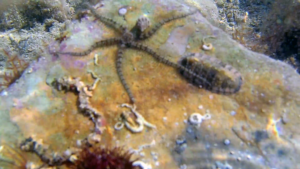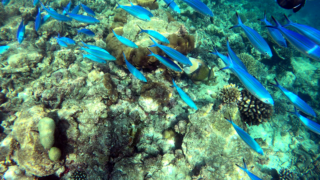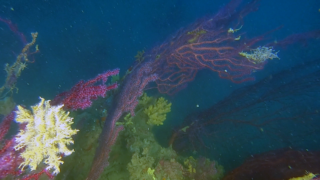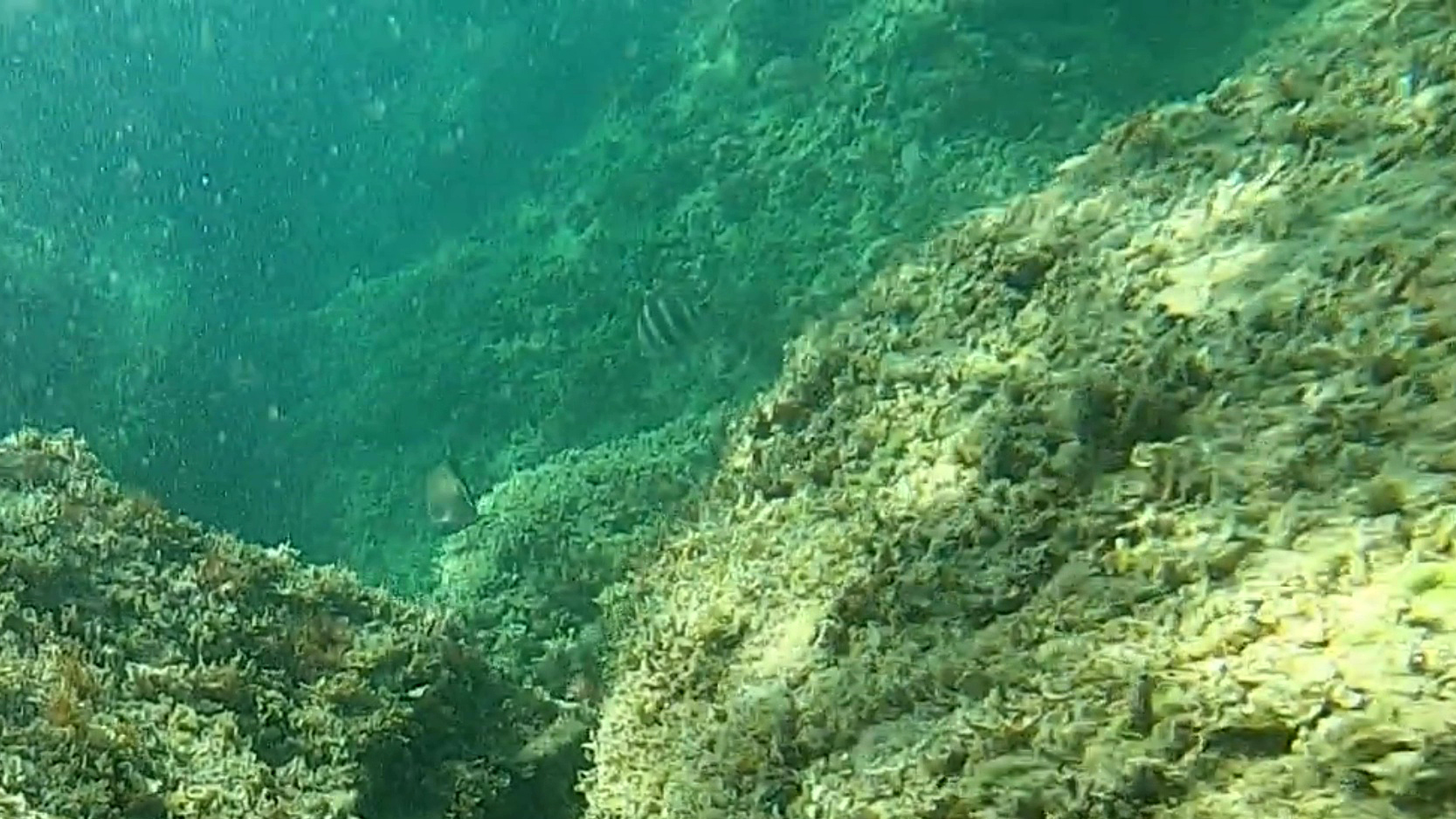The Moray (Muraena helena). It is widespread in the Mediterranean Sea and the eastern Atlantic (from the South of England to Senegal, including the coastal areas of the Azores, Madeira, the Canary Islands, and Cape Verde). There are scoliosiss or corals devoid of sedimentation and rich in ravines at depths between 5 and 50 meters. Juvenile individuals are often found in very low water. Murena muraena helena intotheblue.it
Like all the anguilliforms the Moray has serpentiform body.
It feeds on fish, crustaceans and molluscs, especially cephalopods. Hunting at night meandering through the rocks and researching the prey with the very developed smell. Murena muraena helena intotheblue.it
The Moray is a rather shy animal and if disturbed tends to flee inside the burrow or between the surrounding rocks; however it can attack even without being provoked because of its territoriality. It is particularly risky the habit of certain divers to offer food to moray eels with their hands. The bite of the Moray is very painful but it is not certain if there are toxins in the saliva. Toxins able to provoke hemolysis are certainly present in the blood of the Moray and numerous other anguilliforms such as eel and conger. These toxins, of a protein nature, are only active if they are introduced into the bloodstream of humans while they are harmless for ingestion. They are still inactivated by cooking.
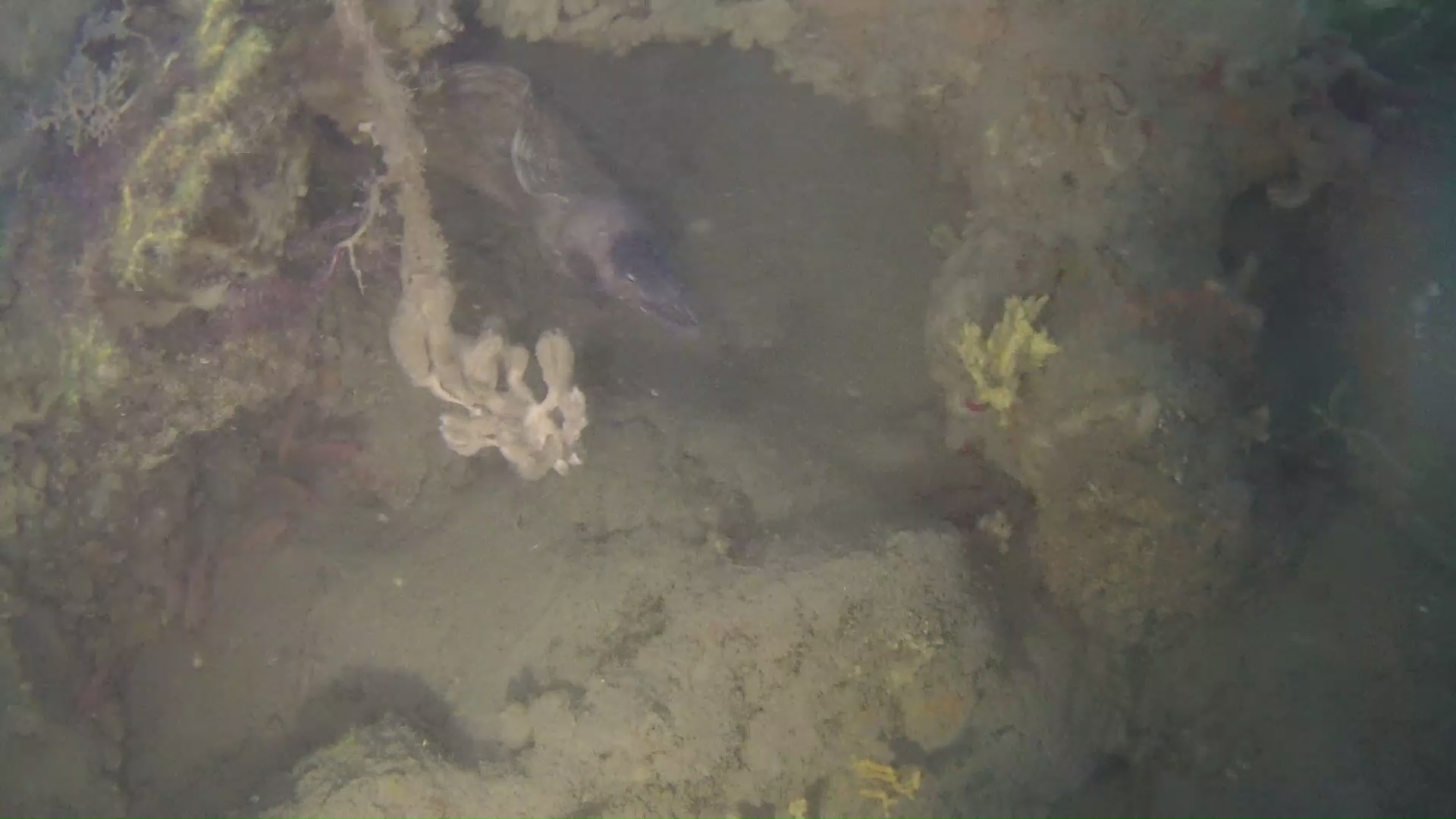
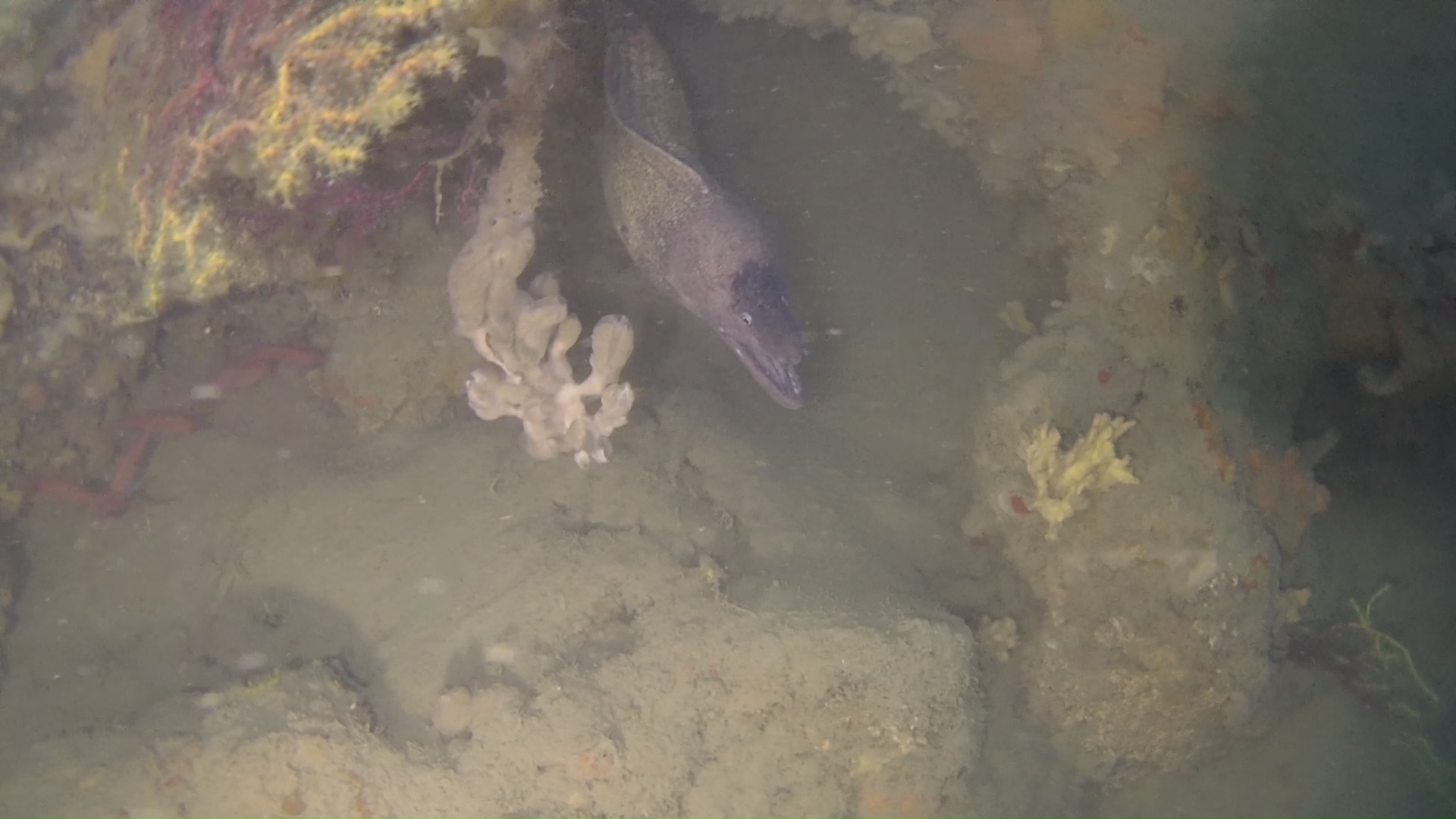

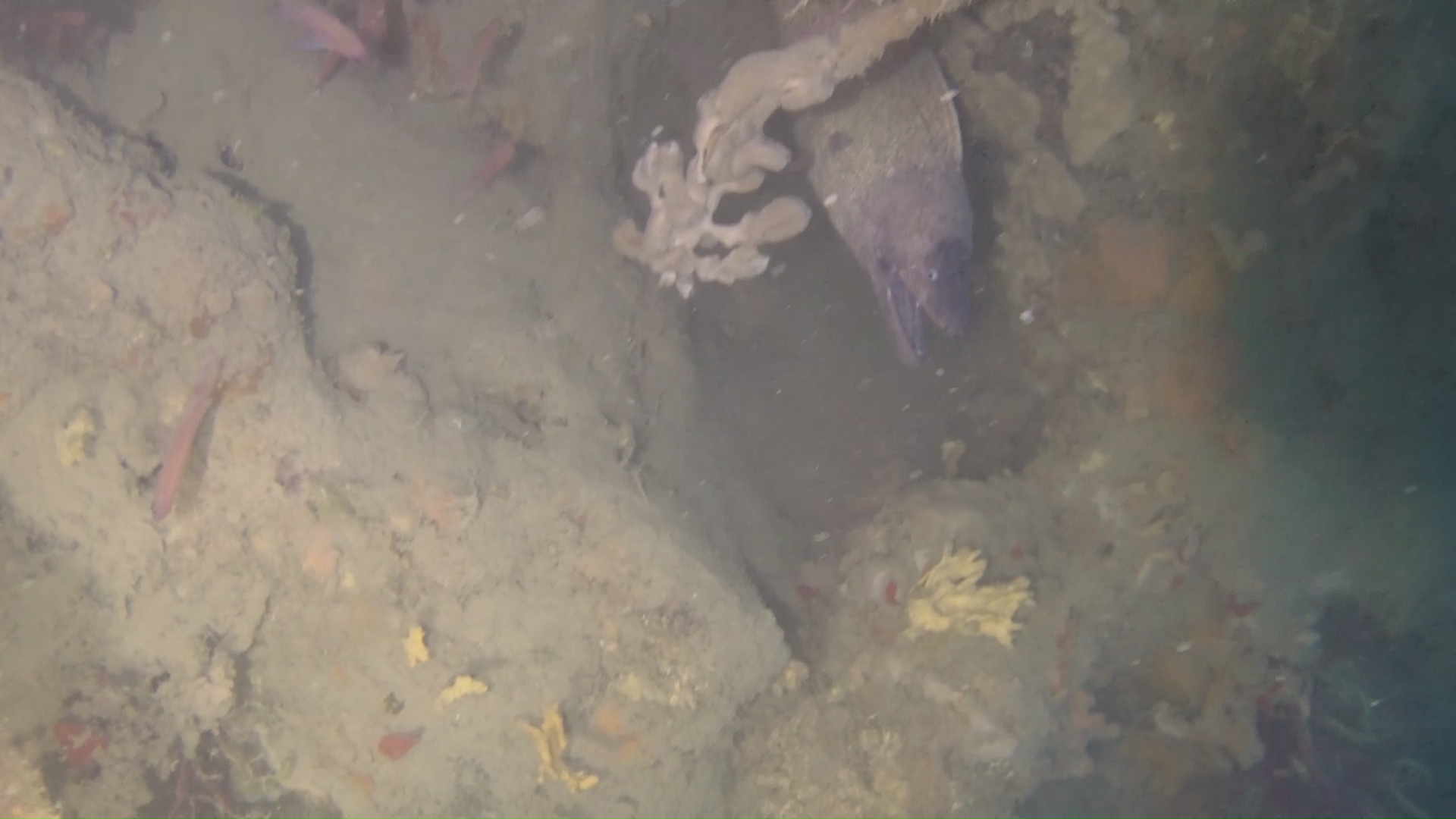
Muraenidae are a cosmopolitan family of eels . The approximately 200 species in 15 gener a are almost exclusively marine, but several species are regularly seen in brackish water, and a very few are found in fresh water.
The dorsal fin extends from just behind the head along the back and joins seamlessly with the caudal and anal fins. Most species lack pectoral and pelvic fins, adding to their serpentine appearance. Their eyes are rather small; morays rely on their highly developed sense of smell, lying in wait to ambush prey.
The body is generally patterned. In some species, the inside of the mouth is also patterned. Their jaws are wide, framing a protruding snout. Most possess large teeth used to tear flesh or grasp slippery prey items.
Morays secrete a protective mucus over their smooth, scaleless skin, which in some species contains a toxin. They have much thicker skin and high densities of goblet cells in the epidermis that allows mucus to be produced at a higher rate than in other eel species. This allows sand granules to adhere to the sides of their burrows in sand-dwelling morays, thus making the walls of the burrow more permanent due to the glycosylation of mucins in mucus. Their small, circular gills, located on the flanks far posterior to the mouth, require the moray to maintain a gap to facilitate respiration.
(extract from Wikipedia)
 English
English Italiano
Italiano
